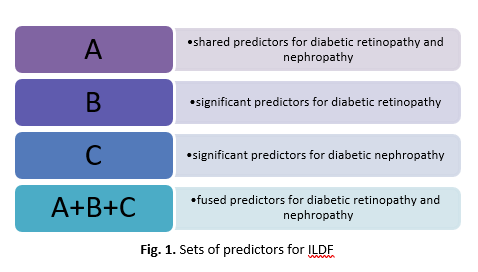Application of Intermediate Level Data Fusion to Improve Classification of Diabetic Retinopathy
DOI:
https://doi.org/10.37934/araset.61.2.3342Keywords:
Diabetic retinopathy, Diabetic nephropathy, Intermediate level data fusion, Ordinal logistic regressionAbstract
This study highlights the application of intermediate level data fusion to improve the classification of diabetic retinopathy stages among type 2 diabetes mellitus patients. Intermediate level data fusion was applied to analyse the demographic factors, clinical predictors, and risk factors for diabetic retinopathy and diabetic nephropathy, independently. The investigation focuses on the two diseases due to their inter-relation implication towards diabetes patients after certain period. Two models namely baseline model and mean model for the clinical predictors were applied in modelling the classification rules using ordinal logistic regression. The aim of the study is to evaluate the performance of the selected classification rule based on different sets of significant predictors from diabetic retinopathy, diabetic nephropathy, and the fusion of both predictors. The developed classification models with different combinations of predictors were tested to confirm the best model to classify diabetic retinopathy stages among type 2 diabetic patients who are at risk of retinopathy. In conclusion, intermediate level data fusion based on the baseline model shows better classification performance in classifying the stages of diabetic retinopathy.





























